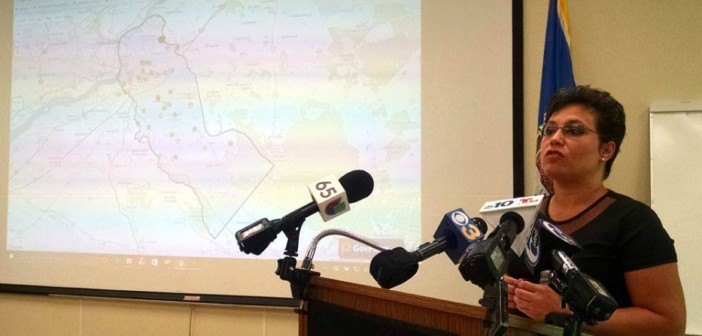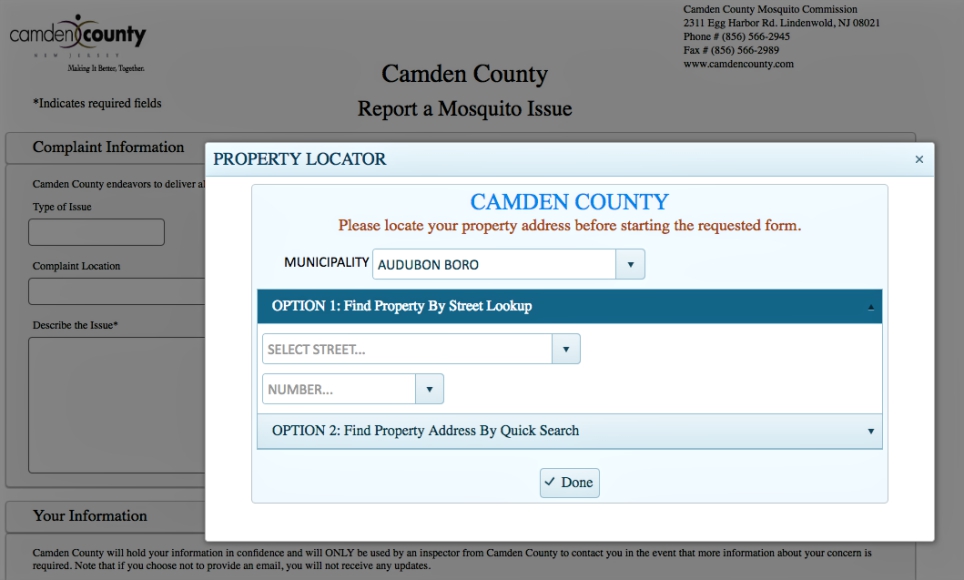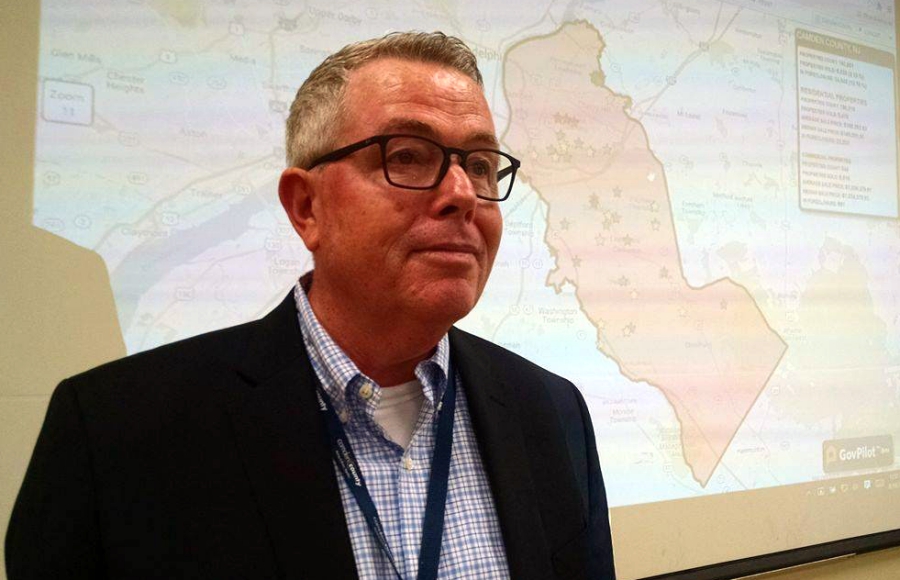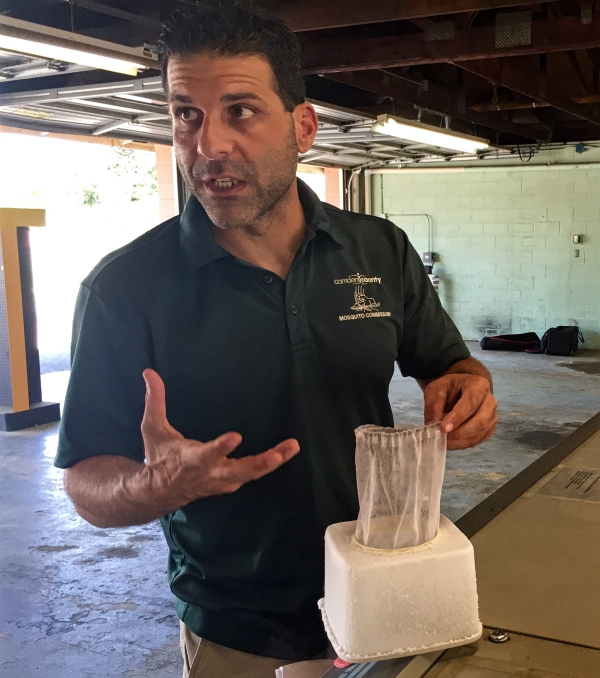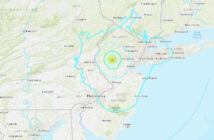Freeholders say the GIS-based mapping service will give residents greater ability to report problems, faster and more detailed response time, and valuable disease vector information.
By Matt Skoufalos | August 19, 2016
The summer is almost over, but mosquito season won’t end until the weather gets significantly cooler.
To help residents limit the spread of the pests and the diseases they can transmit, the Camden County government debuted an mosquito “hot spot” online reporting tool Friday.
Officials said the web-based form will help alleviate public health risks associated with mosquitoes as disease vectors.
“Earlier this year, we heard the possibility of zika [virus] becoming a very significant health issue in our community,” said Camden County Freeholder Carmen Rodriguez.
“At that time, members of the health department got together to discuss what we could do to make sure Camden County is safe throughout this process,” she said.
Rodriguez confirmed that the county does not have a mosquito population sufficient to transmit zika, but as only 20 percent of zika-infected individuals present with symptoms, monitoring the insects “is essential.
“We want to make sure those mosquitoes are not introduced because that’s how it gets perpetuated in our community,” Rodriguez said, adding that the virus is transmitted through direct insect bites or sexual intercourse.
The mosquito “hot spot” tool is built on GovPilot, a GIS mapping overlay that allows members of the public to report electronically an area of mosquito activity. The system produces e-mail tickets when the sites are reported, visited, and remediated, which officials said will produce a more targeted response than traditional interventions.
Standardizing the intake of such information and mapping locations of concern will also help the county government to get a bigger-picture view of problem areas, Rodriguez said. A $30,000 state grant for purchasing tablets investigators can use onsite will “maximize our resources,” she said.
Deputy County Administrator Jim Rhodes said the online reporting feature is “a great citizen engagement tool” that can better inform mosquito investigators before they arrive onsite.
It will also provide aggregate information about resource management, treatment strategies, and investigation results.
“This is the first system we’re using GIS mapping for,” Rhodes said.
“We do have plans to expand this to the parks system, to public works, for various types of complaints citizens may have…a pothole, snow, a tree down, housing; any types of issues that our departments might be able to help.”
Rhodes said the county is working to roll out a municipality-based overlay for GovPilot that will enable local communities to get more data intelligence about issues in their towns.
“It’s about to become very robust,” he said.
For constituents who are not able to report issues electronically, the county maintains a phone number for mosquito service (856-566-2945), and inspectors still leave door tags when they visit, Rhodes said. Complaints are typically resolved within two to four days.
Mosquito inspector Jay Radano said that the digital system will supplement the traditional information-gathering resources the county uses, which also include an anonymous tipline for problem areas.
“We’ve had tons of information before,” Radano said.
“It’s always been through phone or our own data keeping. This program is going to be able to condense all of that in one spot.”
In addition to stagnant water pools, which the county has long targeted as mosquito breeding grounds, foreclosed and abandoned properties have complicated the severity of the problem.
Earlier this summer, the county established a minnow hatchery to help breed more of the insectivore fish for use in waterways, but they’re also seeing use in abandoned pools.
“I’d say the last six years or so have been really bad,” Radano said. “You get one house that can affect a bunch of different houses in the neighborhood.
“It’s not only the unused pools, it’s the trash,” he said. “The lawnmower that’s left outside. The shed that’s been collecting water. Buckets, gutters, baby pools, foreclosed pools.
“If we can alleviate the spot, we will treat it,” Radano said.
Get more local news that matters. Check out NJ Pen on Facebook and Twitter, or click here to become a supporter.

